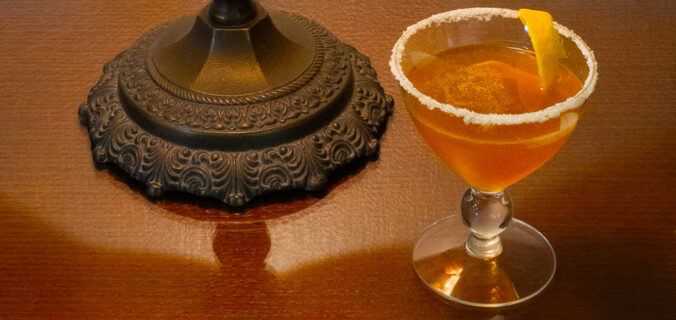Looking back on the first 15 weeks of Sunday Specials reveals something about my taste in cocktails: I like them sour.
Citrus (lemon, lime, grapefruit) or some other tart fruit (rhubarb, apple, or berries) figures prominently in many of the recipes I’ve shared. This isn’t intentional: I try out cocktail recipes based mainly on what I think I and other members of the Cuisine Stupide household might enjoy, and I share the successes as Sunday Specials. It just happens that many of the winners on the playing field of my palate are the type that tend to pucker.
Apparently I’m not alone. In Gary Regan’s indispensable The Joy of Mixology, sour drinks fill five full pages of his Cocktail Families Chart—as much as all other drink families combined.
And variations abound. In addition to simple sours (base liquor, citrus juice, simple syrup), Regan’s taxonomy also includes enhanced sours (add vermouth), New Orleans sours (substitute orange liqueur for simple syrup), international sours (use exotic liqueurs for sweetening), and sparkling sours (add club soda or sparkling wine). The Daiquiri is a simple sour. The Lady Womp is a sparkling sour. The Marionberry Bramble, despite its Oregon-centric ingredients, is an international sour. You get the idea.
Along the way I’ve tried to offer a mix of classic cocktail recipes (especially the ones I’ve never tried before) as well as new concoctions developed by modern mixologists. This week’s offering is an oldie. And it’s a sour. New Orleans variety.
As is often the case with cocktails from the 19th and early 20th centuries, the origins of the Sidecar are in dispute. The most colorful tale has the drink invented at a Paris bistro during World War I as a tribute to a regular customer who rode around in a motorcycle sidecar. (The guy who steered the motorcycle was apparently a Designated Driver and thus couldn’t bid on the naming rights.) Naturally, other bars in Paris, London, and elsewhere claimed to have made the drink first, though none of them had a better story.
As Regan points out, however, the Sidecar is really just a variation on the Brandy Crusta, invented in the French Quarter at least half a century earlier. The Brandy Crusta is widely considered the forerunner not only of the Sidecar but also the Margarita, the Cosmopolitan, and even the Lemon Drop.
For its part, the Sidecar is mostly straightforward but does offer room for experimentation. The biggest variable is the cognac: Laura Foster, a first-rate writer about all things liquor, does not recommend spending a bunch on an Extra Old cognac but to opt instead for a younger VS or VSOP. I went with a Martell VSOP Aged in Red Barrels, which is about one-sixth the price of Martell XO.
One other variable: to sugar the rim or not? Most modern takes on the Sidecar call for a simple citrus twist. I did both.
Because what’s a sour without a little sweet?
Sidecar
Adapted from Dale DeGroff, The Craft of the Cocktail
1 ounce brandy
1 ounce Cointreau
3/4 ounce fresh lemon juice
Sugar for rim of the glass
Orange or lemon peel for garnish
Shake all liquid ingredients with ice and strain into a chilled cocktail glass with a sugared rim. Garnish with the twist.

